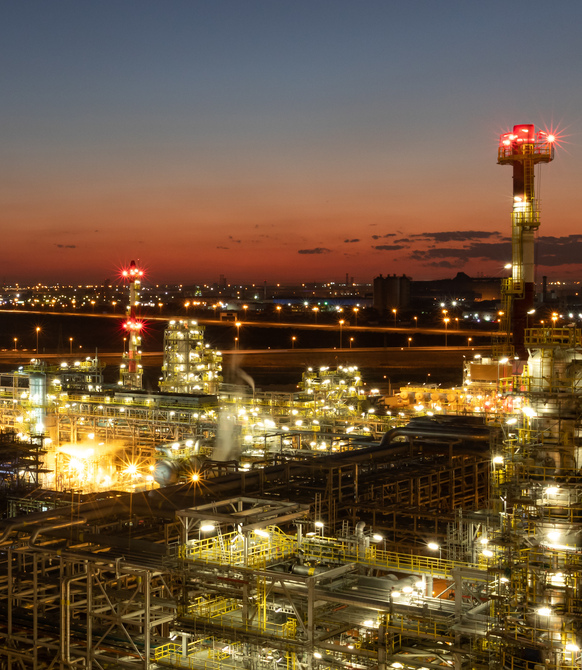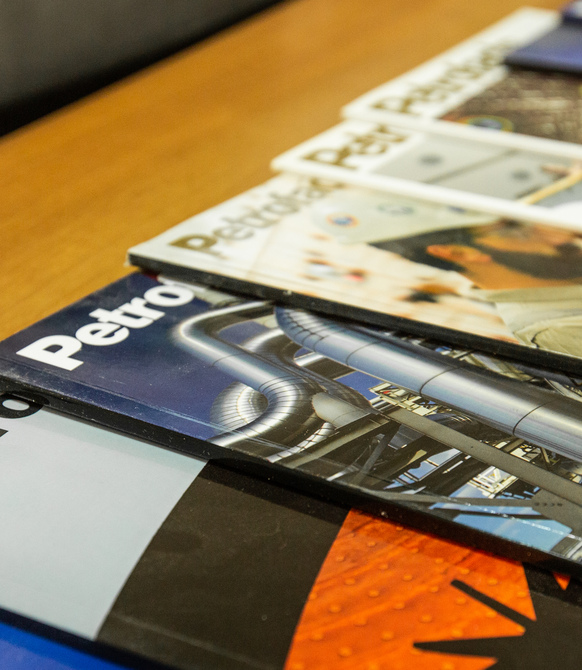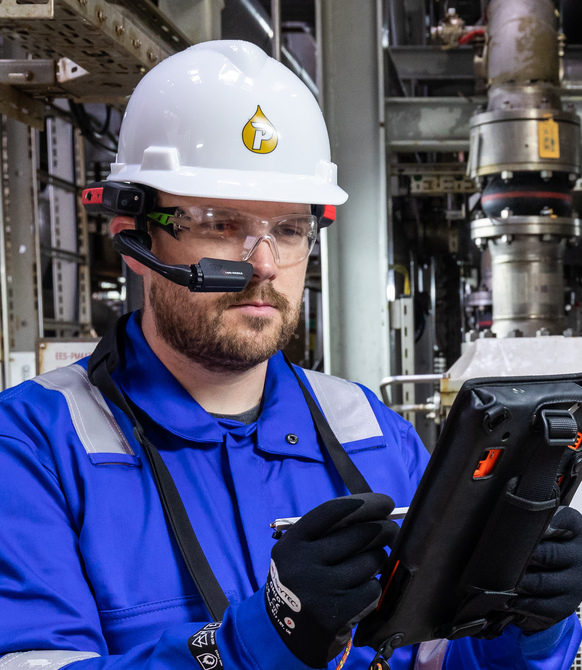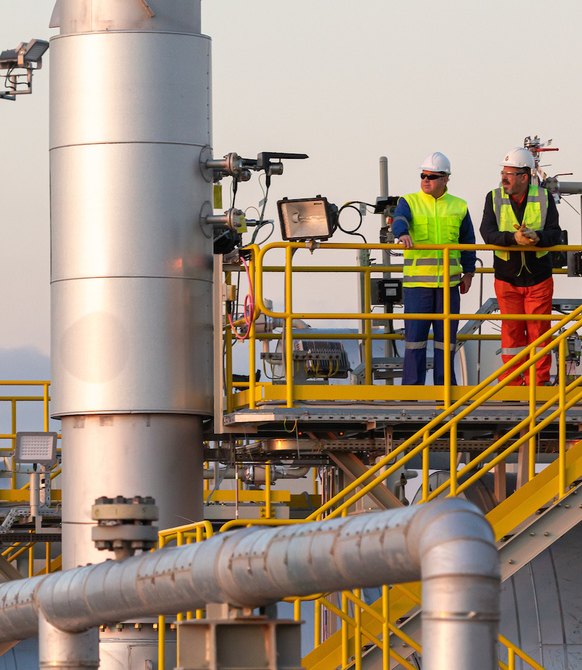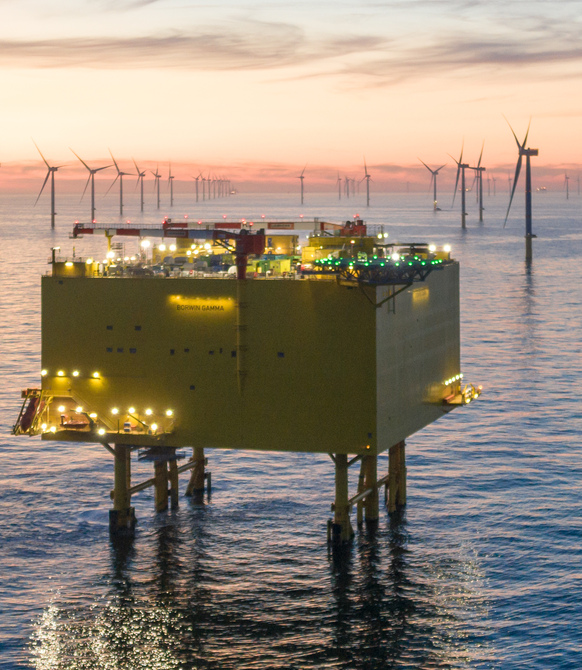31 January 2018
The journey to offshore wind: meet the team behind the transport and installation of BorWin3
At Drydocks World, Dubai, the topside for our BorWin3 project is taking shape. The huge BorWin Gamma platform has risen quickly, layer after layer. The jacket structure which will support this is also currently being produced by Hereema Fabrication in the Netherlands.
In consortium with Siemens, we have full responsibility for the engineering, procurement and construction, as well as the transportation and installation (T&I) element. The project is due to be completed in 2019, 130 kilometres off the German coast, and as you can imagine, the T&I requirements that will take place before this are significant and complex.
The topside itself weighs in at around 20,000 tonnes and is about half the size of a football pitch. It’s also the first time a dynamic positioning floatover will be carried out in the North Sea. A computer-controlled system will automatically maintain the vessel's position by using its own propellers and thruster rather than anchors, so this is a pioneering project for all the T&I team involved.
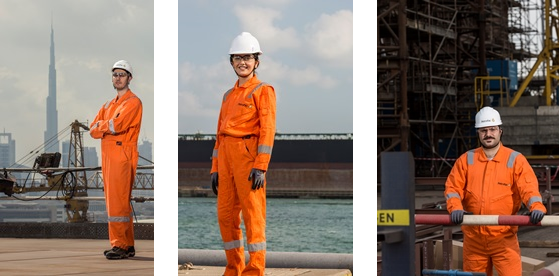
“T&I has been key from the start, since the consideration of fabrication locations, load out and installation methodology, potential sub-contractors and equipment. Part of our role is to streamline execution by managing sub-contractors and communicating with the wide-ranging number of stakeholders,” says Fabio Sala, T&I manager and veteran of the offshore sector, who is leading the group.
“Planning, specialist engineering, procurement and dedicated project management are some of the key elements we are focusing on ahead of the main operational phase which is scheduled to commence in the first half of next year.”
The T&I also requires the engineering of specialist kit. These include the sea fastenings, grillage and a large deck support frame structure for the topside, which will weigh in at around 2,500 tonnes, so this element is a mini project in itself.
The team has to plan operations based on different scenarios. Sea conditions and other key factors vary greatly during different times of the year. It’s currently estimated that the topside will take 26 days to reach its North Sea destination from Dubai; give or take a day or two for heavy traffic in the Suez Canal or bad weather.
“The Bay of Biscay, off the west coast of France, is well known for rough seas, particularly if the travel schedule moves outside of the planned summer months,” says Farah Wehbe, a graduate engineer who joined the project from The Petrofac Academy and whose role is focused on the topside.
COSCO Shipping’s Xiang He Kou is the heavy lift vessel that will carry the platform and the plan is that team members will join the ship for the voyage.
Weight, load and size is core to all planning for a safe passage. At 67 metres above water level, the highest point of the topside is the tip of the ‘A frame’ crane. This is just 1 metre below the allowed maximum height to clear the Suez Canal bridges.
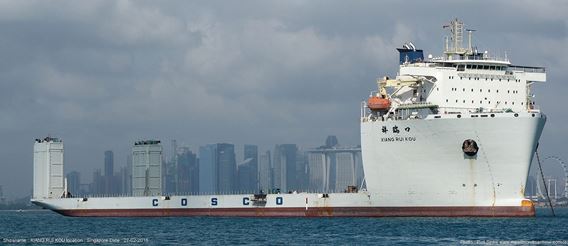
The platform also houses the sensitive Siemens equipment, which will convert the alternating current produced by wind turbines into direct current, before transmitting it onshore to the German national grid. “We have to ensure we keep these sophisticated items safe, so we’ll continuously monitor the motion and work to limit movement of the ship,” says Farah.
Kalim Chidiac is a project engineer who was involved back in the initial bid phase of the project, then returned to join the T&I team. Kalim’s main scope is the jacket, and he plans to spend two months at the Hereema yard before it sails next year.
“The jacket will reach our location by normal cargo barge, towed by tugs. The SSCV Thialf, which is the largest semi-submersible crane vessel in the world, will then lift the jacket and install it in the water,” explains Kalim.
The team have been immersed in day to day interaction with our client, TenneT and the various German authorities to ensure the marine environmental factors such as birds, fish, marine mammals, sea bottom and water are protected. “Noise pollution during the two week installation of the jacket is also a particular consideration,” says Kalim. “We’ll be using Menck’s powerful MHU 3500S for the pile driving, which is reported to be the largest hammer in the world!”
With the jacket in place and the topside safely arrived, the dynamic positioning floatover will progress. The final schedule and culmination of the T&I phase will be subject to suitable local weather conditions. It’s a first to perform this type of floatover using a semi-submersible vessel, rather than a lift operation in the North Sea and it’ll be a delicate and precision-led operation, with the planned ‘plug and play’ connection of the topside to the jacket completing the operation.


